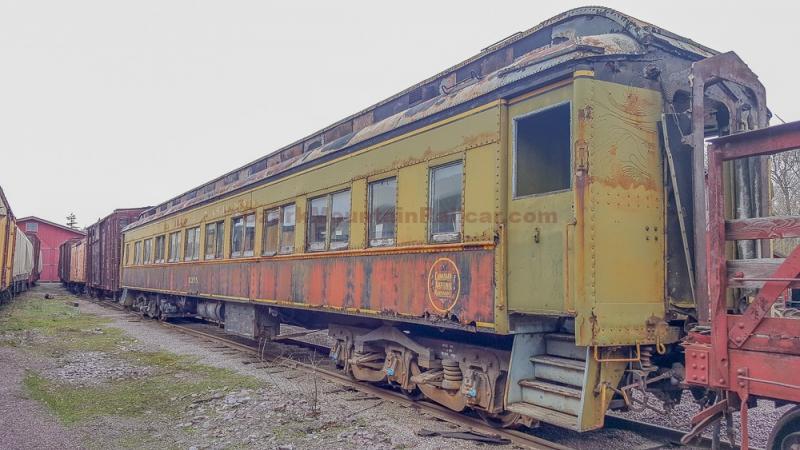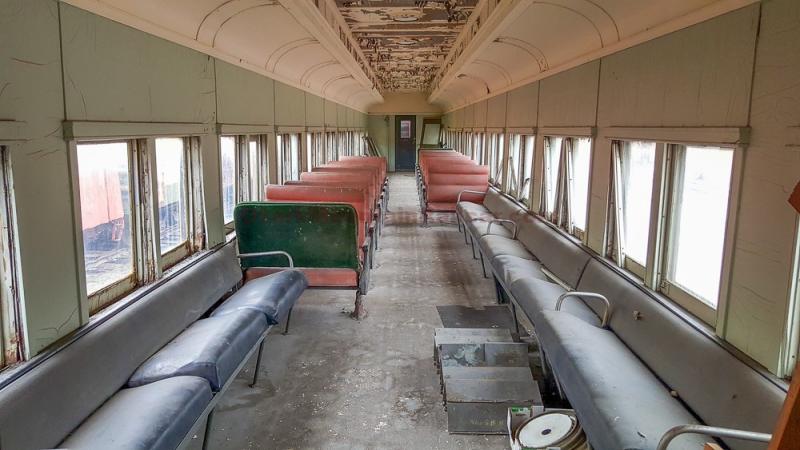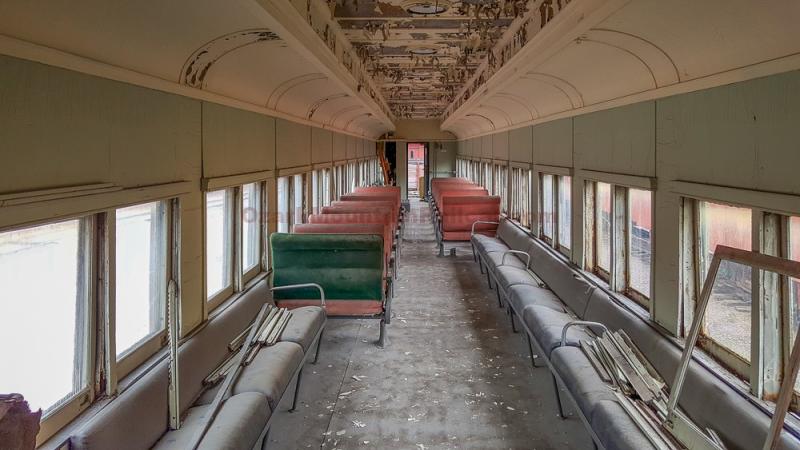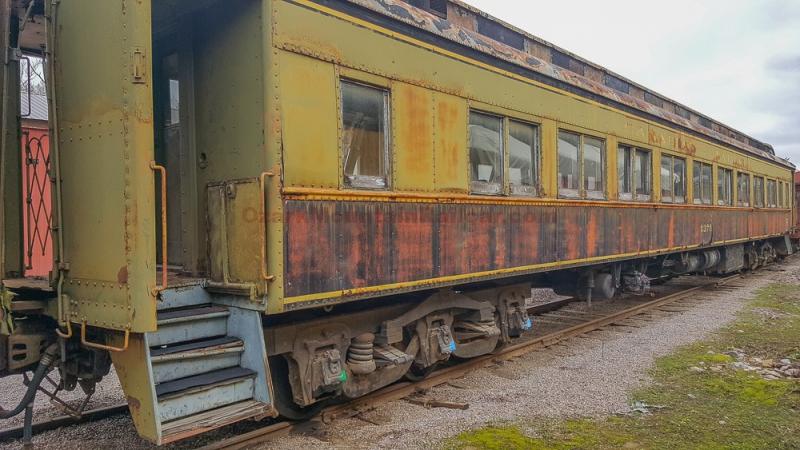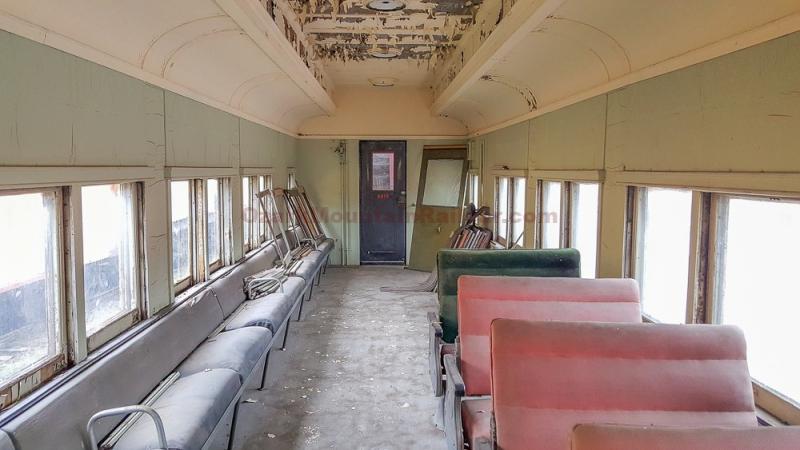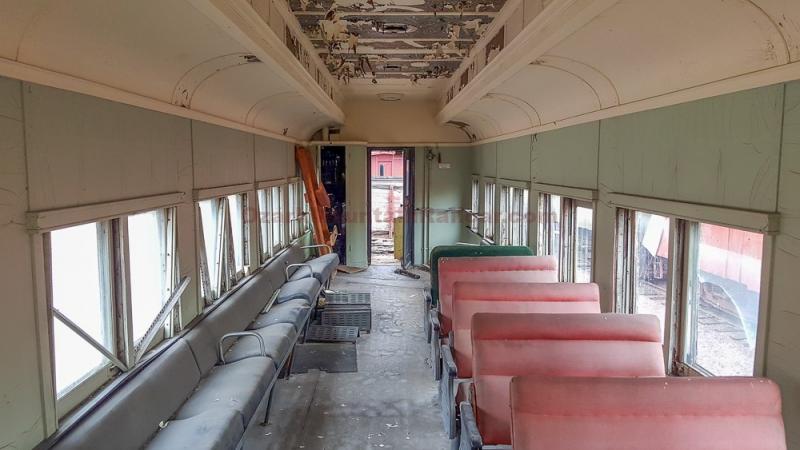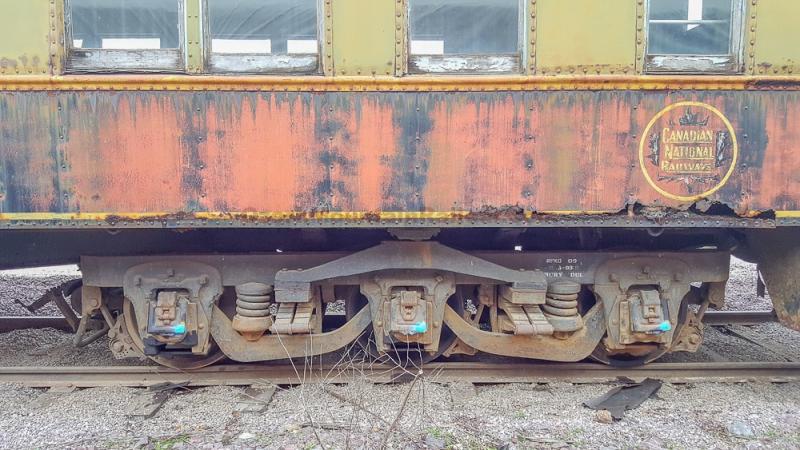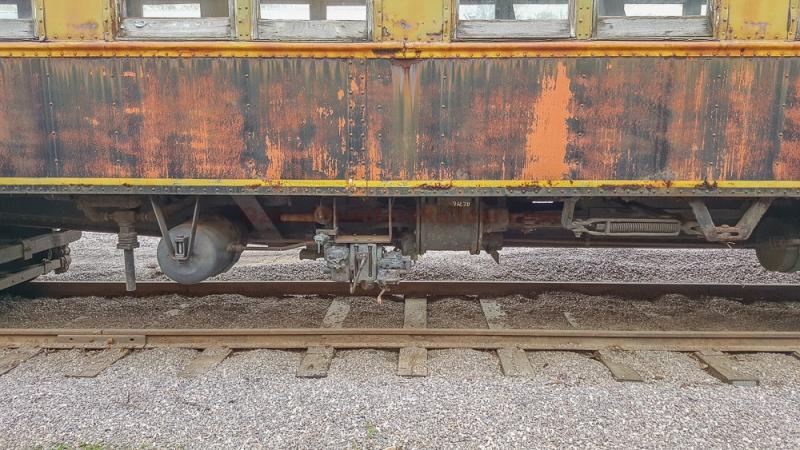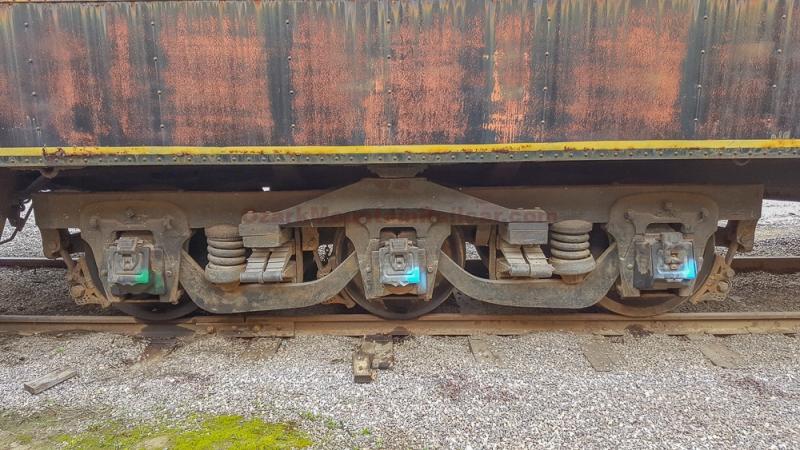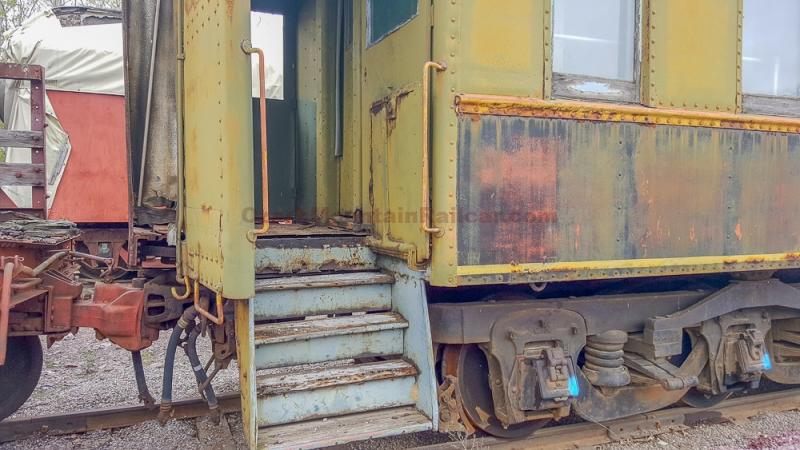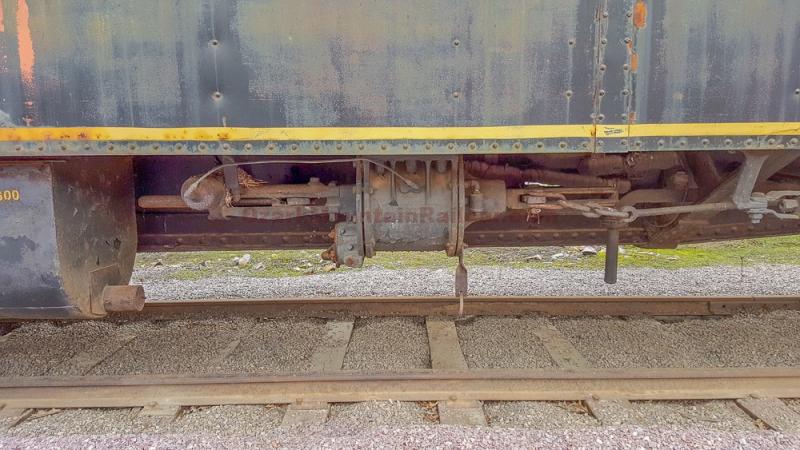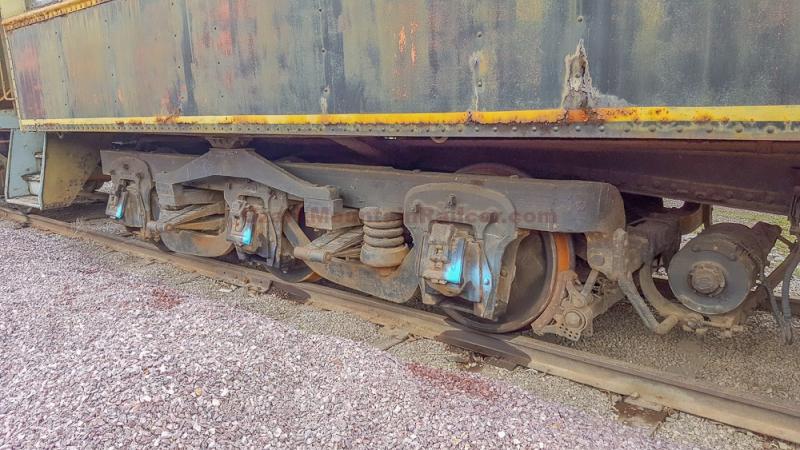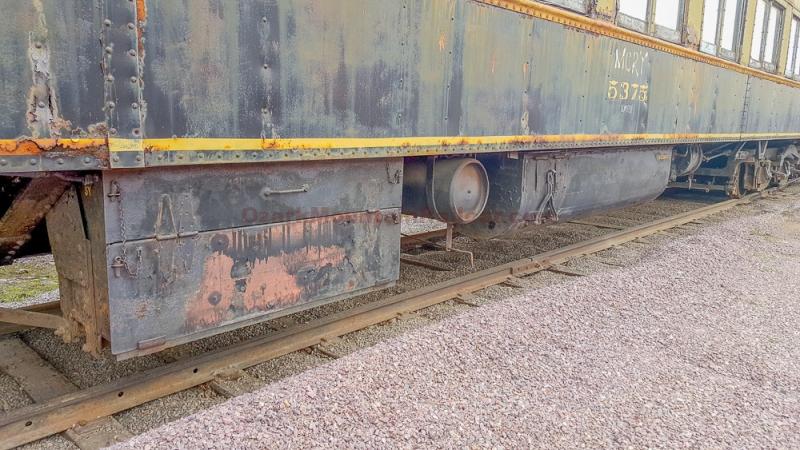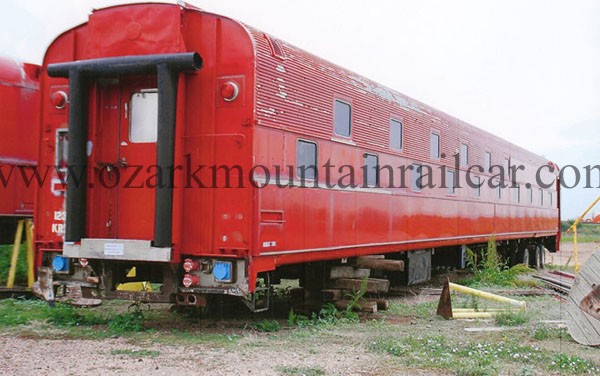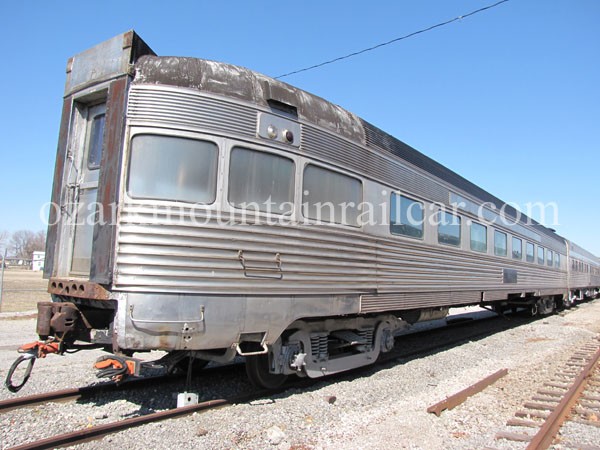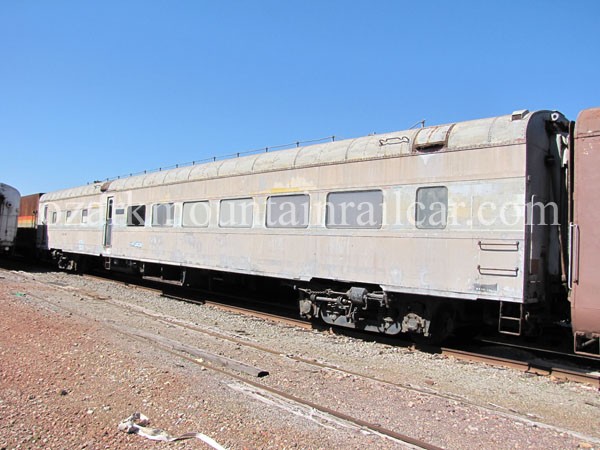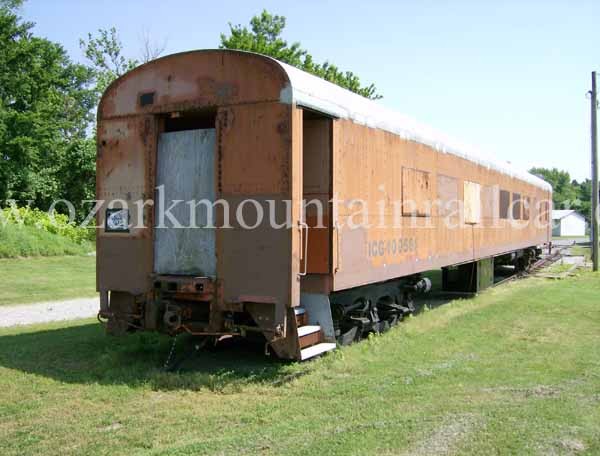This car was originally completed by the Pullman Co. in November 1913 as the “Sumter,” one of a series of ten sleeping cars, each with seven compartments and two drawing rooms. Other names in the series were “Ruskin,” “Kissimmee,” “Sanford,” “Yemassee,” “Waycross,” “Skyland,” “Dixieana,” and “Everett.” These cars were of all-steel construction, examples of the early steel passenger car era. “Sumter” worked in Pullman company service for many years and was ultimately sold to the Canadian National in 1942. CN immediately converted the car to first class coach #5375, with 24 seats in a smoking section and 52 seats in the main compartment. All seats were high-backed and reversible, with “Green Boucle” upholstery. At the time, the car featured electric lighting and Vapor heating. At a later date, the car was again shopped by CN, but this time it was converted to commuter train service by removing the interior partition and many of the reversible “walkover” seats, replacing them with bench seating along the walls. Seating capacity was thereby increased to 78, plus 110 “standees.” By 1975, the car was retired from service and was donated to a Minnesota museum. It was used a few times in excursion service and then stored for several years before being sold. Some of the mechanical details include: Body mounted cylinders, friction bearings, bolted pedistles, fair body and roof.
